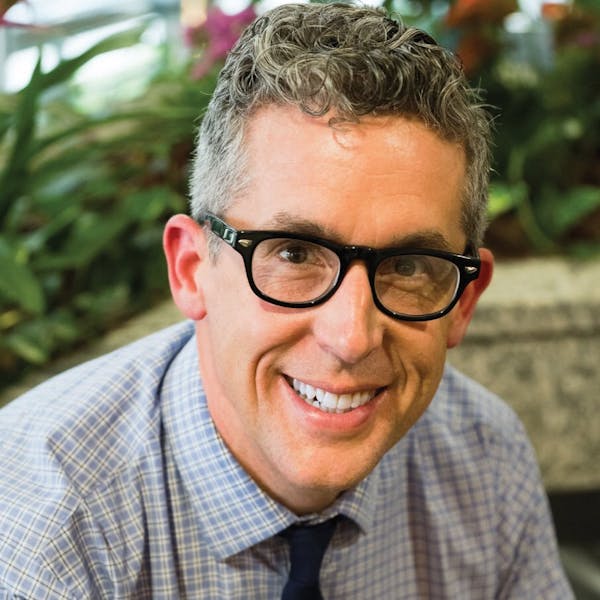As many as 26,600 St. Paul homes may have lead water service pipes, according to a new report from St. Paul Regional Water Services, and replacing them could cost hundreds of millions of dollars.
While the city has for years been replacing lead pipes in the public right-of-way as it rebuilds streets, 20 to 25% of its residential customers still may have harmful lead that is leaching into their home's water supply.
Those numbers, presented at a recent Board of Water Commissioners meeting, were alarming enough that commission members called for an aggressive 10-year plan to replace all lead pipes on public or private property. The estimated total cost is more than $220 million, water officials said.
Chris Tolbert, a water commissioner and City Council member, said the work to get the lead out should not wait.
"I think we need to be bold on this. We need to say we are going to replace every lead pipe in the next 10 years — public and private — and push it," Tolbert said, calling for a comprehensive plan to be presented at next month's water board meeting. "It's the right thing to do and pretty simple: Pull the lead pipe and put the copper in."
The estimated cost to replace all right-of-way lead pipes is $82 million. The estimated cost to homeowners to replace the private property side of those lines is $141 million.
Although the price tag is daunting, Tolbert and Amy Brendmoen, a fellow commissioner and City Council president, said St. Paul should tap into an expected windfall of federal dollars — from the American Rescue Plan and the infrastructure bill, which includes money specifically for replacing lead service lines, to make it happen.
"If I have learned one thing in my time in elective office, it's that if you have a plan in place, when money comes up you can catch it and put it to good use," Brendmoen said.
Still, even with the influx of federal funds, paying the full cost of replacing St. Paul's lead water pipes may require state assistance — in the form of bonding — as well as assessments and raising customers' water rates.
"As a utility, from the board down to a staffing level, we do have the will to get it done as quickly as we can," said Patrick Shea, St. Paul Regional Water Services general manager.
The plan Shea expects to present at the Feb. 8 water board meeting will contain budget assumptions as well as projected shortfalls, he said.
After a federal law passed in the 1990s required the utility to come up with a replacement schedule, Shea said St. Paul was required to test water from 200 properties, submitting results from 30 of the worst cases every three years.
So far, lead levels have been below the government's "trigger level" of 15 parts per billion, Shea said. But a new rule that will take effect in October 2024 will require cities to replace lead water lines more swiftly if lead levels reach 10 parts per billion, he said. No amount of lead in water is desirable, Shea said, and the U.S. Environmental Protection Agency could force St. Paul's hand.
Lead service lines were installed in St. Paul and some nearby suburbs through the late 1920s, although some went in as late as the 1940s. The city has set up a map that allows property owners to look up their homes to see if they have lead water pipes. Those concerned about lead in their water can obtain a free test kit from St. Paul Regional Water Services at 1900 Rice St., Shea said.
The city owns the pipe that runs from the water main beneath the street up to the edge of private property and is responsible for the cost of replacing it. Homeowners must pay to replace water pipe that runs from the edge of their property into their home.
For 25 years, St. Paul Regional Water Services has been replacing lead water pipes in the street right-of-way, usually at the same time as street and water main reconstruction projects.
While the city has been replacing about 400 lead water lines a year in the right-of-way, only 5-10% of property owners have opted to replace the lead pipes going into their house at the same time. To coax more homeowners to do the work — estimated at $6,000 — the city offers an assessment program allowing them to pay through their property taxes over 20 years.
In 2021, the state added $1,500 grants to property owners — $2,500 for low-income applicants and registered childcare providers — to offset the cost. While replacement numbers rose, officials say few low-income residents and childcare providers have taken advantage.
Nearly 9,000 properties in St. Paul still have full lead water service lines, under both the right-of-way and on private property. Another 11,200 homes have had their right-of-way pipes replaced with copper but still have lead going into their homes. There are 6,500 homes where officials don't know what the water pipes are made of but say they may contain lead.
The current system of voluntary replacement and financial incentives isn't cutting it, Tolbert said. Public health and safety demand swifter action, he insisted.
"Replacing these lead pipes is going to be mandated by either the state or the federal governments," he said. "We should go above and beyond and do that now."
4 are now charged in inside job armed robbery of Hopkins grocery store that netted $45K

Minnesota added thousands of jobs in March but worker shortage still an issue
Private prison van driver, accused of raping St. Paul woman he was transporting, gets 30 years for similar attacks



